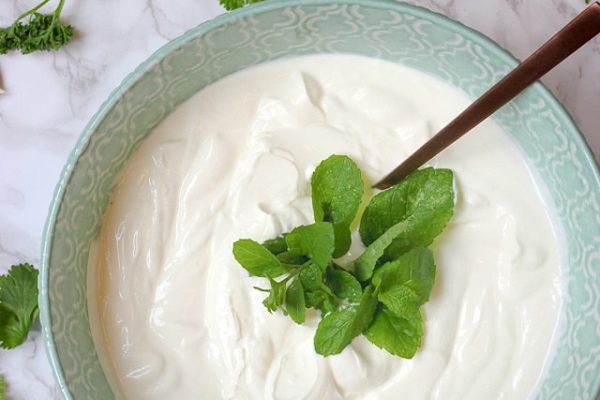Yogurt is the result of milk that has been fermented and coagulated. Its inception, probably by accident, was thought to be around 4,000 years ago when nomadic Balkan tribes stumbled on the process as a way of preserving milk. In this age-old process, milk is left at 1100F for several hours to be invaded by friendly bacteria.
Other types of yogurt are pasteurised again after the cultures have sufficiently fermented the yogurt. This type is labelled ‘heat-treated.’
Active yogurt cultures help to digest casein, a protein found in milk. There is evidence that active yogurt cultures replenish the ‘friendly’ bacteria in our intestines after the supply dwindles.
This decrease in bacteria happens because of normal aging, illness, or use of some medications.
Yogurt did not attract Americans’ attention until the health-food movement of the 1960s. Even now, Europeans still consume five times as much yogurt as North Americans. Consumption in America [and, India] is growing with the increased marketing of yogurt that has additional flavours added. One caution: added flavours can add calories and fat.
Preparation Tips
Plain yogurt can be used in place of cream, or mayonnaise, in recipes, but the result will be less creamy and more tart. Cooking with yogurt, however, is created in a much more sophisticated manner. The process starts with the milk. The type of milk used defines the fat, calories, and, consequently, the richness of the yogurt. For example, non-fat yogurt comes from non-fat milk, and low-fat yogurt is derived from low-fat milk.
The milk is then pasteurised. One of the two milk proteins — the whey — is coagulated to create yogurt’s characteristic glutinous consistency, and the substance is then homogenised and cooled.
The true yogurt-making process begins with the introduction of the starter bacteria cultures. In North America, the two most common bacteria strains used are Streptococcus thermophilus and Lactobacillus bulgaricus. These two types of friendly bacteria change the milk’s sugar [lactose] into lactic acid. The lactic acid is responsible for the tangy, acidic taste of yogurt.
The more bacterial strains used, the stronger the acidic flavour. Some of the bacterial cultures survive the yogurt-making process. This type of yogurt will list ‘active yogurt cultures,’ or yogurt can be a challenge because it curdles so easily. Make sure to allow yogurt to warm to room temperature before slowly heating it.
Low-fat and non-fat versions of plain yogurt can be used in many recipes that call for sour cream. The acidity from the lactic acid creates a taste similar to that of sour cream, but the texture is a bit compromised.
However, a half cup of sour cream has 214 calories and 21 gram of fat, and the same amount of low-fat yogurt has 63 calories and two gram of fat. From a health standpoint, therefore, the texture becomes secondary.
Another option would to be to use half sour cream and half yogurt. Because yogurt contains an acid that can work as a tenderiser, it makes a wonderful marinade for meats. Tandoori chicken, an Indian dish, is probably the most well-known yogurt-marinaded meal. The basic marinade consists of lemon juice and plain yogurt.
Yogurt can be used for fruit and vegetable dips, atop baked potatoes, or cold cereals, or in stroganoff recipes. It can even replace the sour cream used with nachos, or be added to guacamole to reduce the fat.
Serving Suggestions
Yogurt is the ultimate convenience food. Most supermarkets stock single-serving containers tailor-made for lunch boxes, or quick snacks. Some producers have taken this idea a step further, presenting yogurt in push-from-the-bottom tubes that can be eaten without a spoon.
Honey, fruit, and granola are popular additions to yogurt, but yogurt can stand up to bolder additions, such as chilli.
Yogurt also offers two great dessert opportunities: frozen yogurt and smoothies. Frozen yogurt can be found in the super-market. However, it was not until 1926 that refrigeration allowed the mass production of ice-cream. With subsequent decades came better freezers and an increase in ice-cream consumption.
Today, the average American eats more than 15 quart of ice-cream in a year. Part of ice-cream’s popularity can be attributed to its smooth, creamy texture. The process of homogenisation helps create its unique taste by breaking down the size of the fat globules in the milk, making a smoother product.
Adding air also makes ice-cream smoother. After flavours and colours have market freezer section, or you can make your own by adding ingredients to yogurt and freezing it. Smoothies can be made with low-fat yogurt and fruit, or fruit juice, and whipped in a blender as a healthier alternative to malts and shakes.

